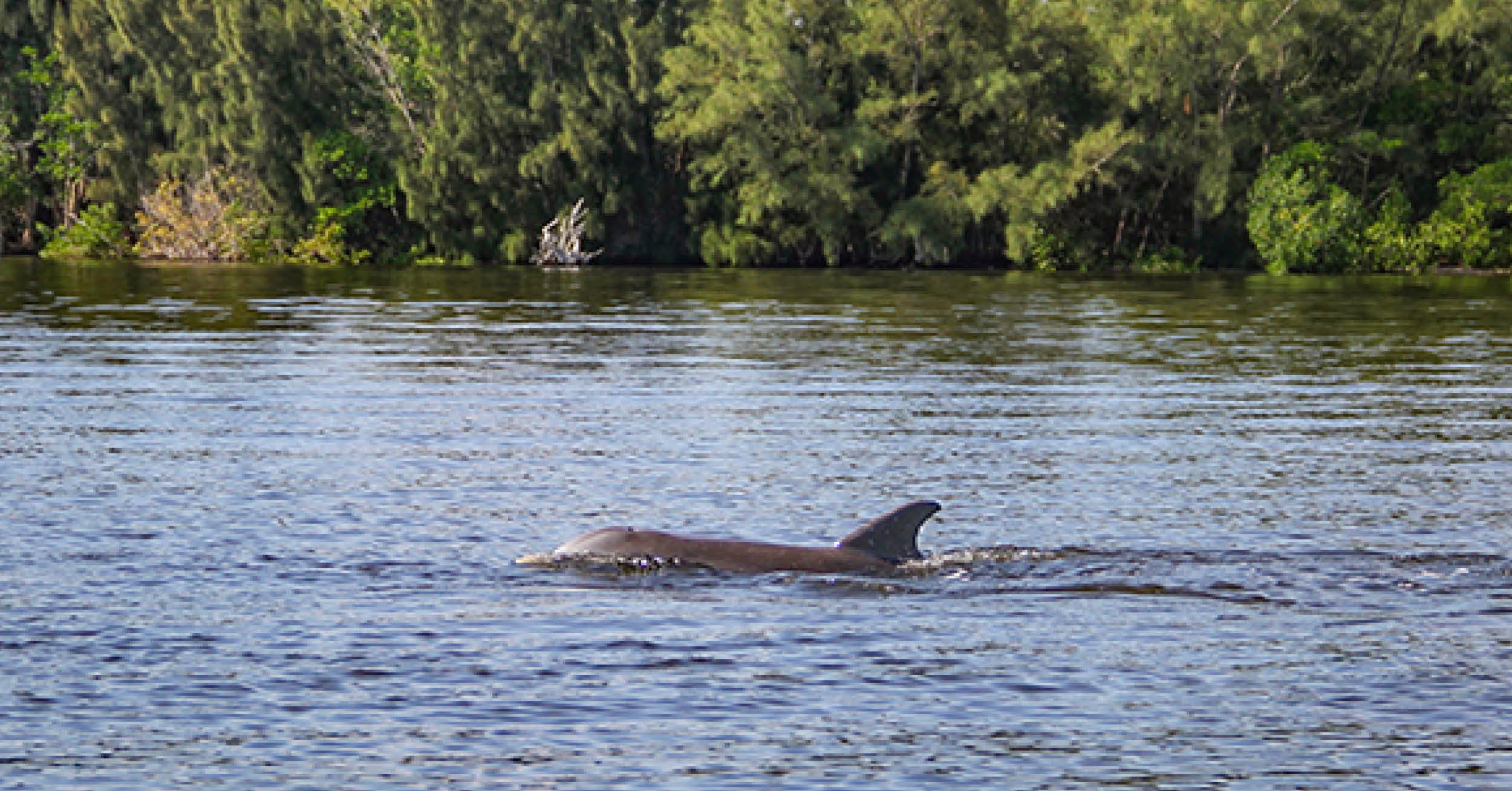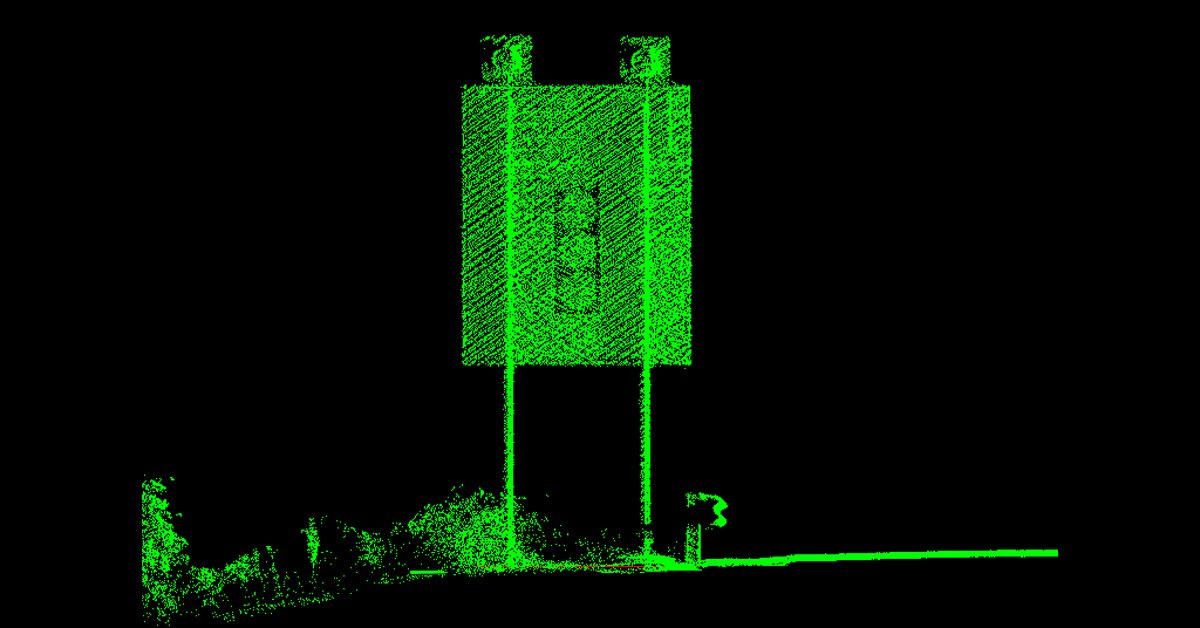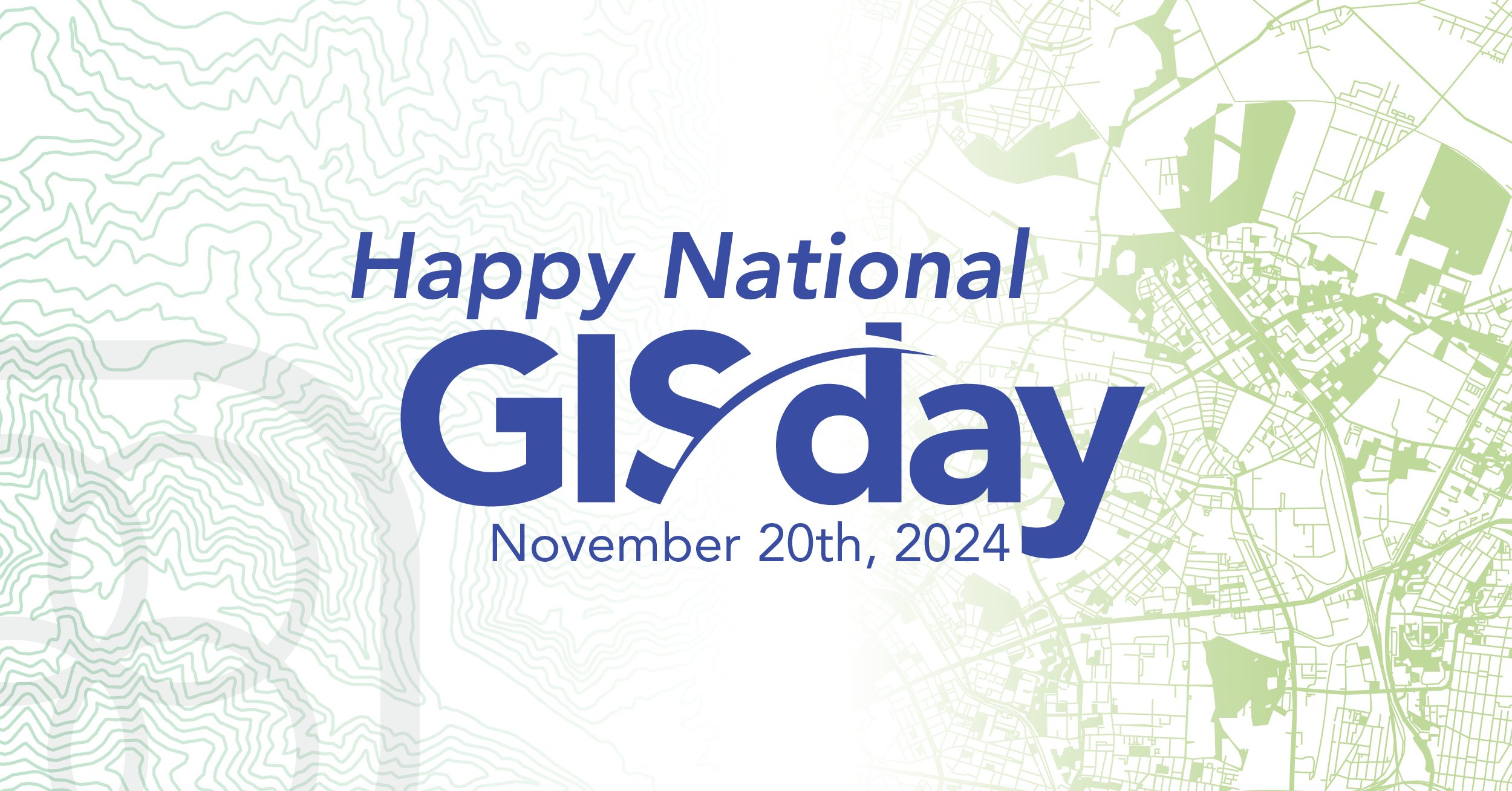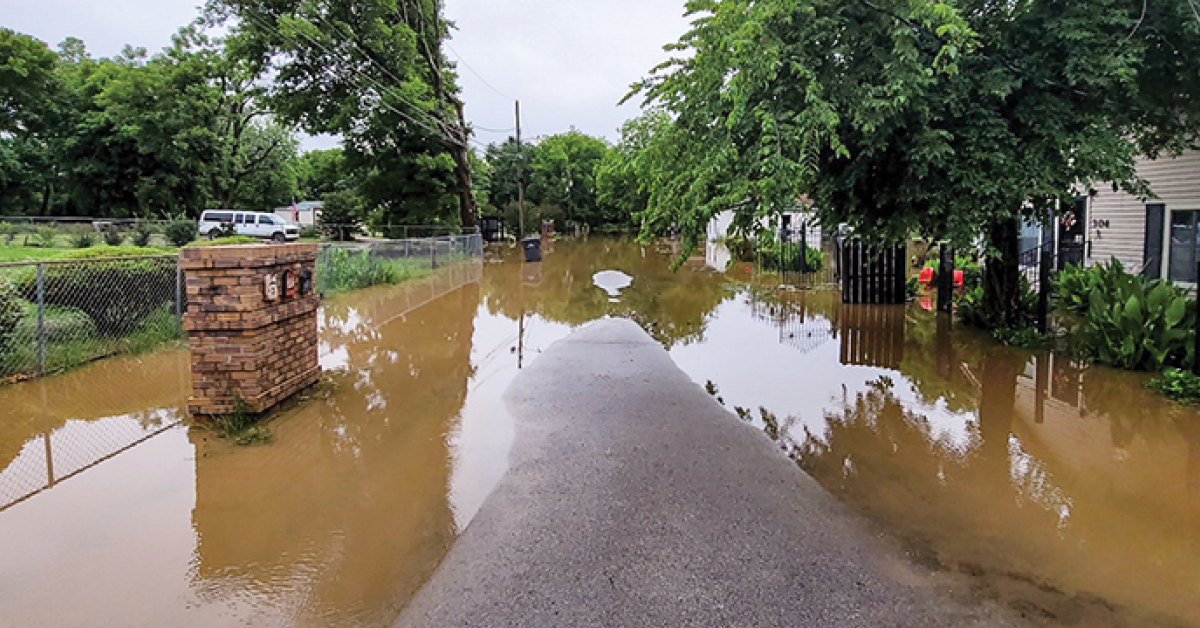The Indian River Lagoon, spanning 156 miles along Florida’s east coast, has been in an environmental crisis for years primarily due to nutrient pollution, which fuels toxic algae blooms, manmade hydrologic alterations, destruction of habitat, and overuse of its resources. It is one of the most biodiverse estuaries in North America and one of 28 in the country designated as an “Estuary of National Significance.”
Its interconnected waterways are home to more than 4,300 plant and animal species, including endangered and threatened marine animals, such as the manatee and green sea turtle.
That’s why I’m excited to be part of the effort to restore and improve the Lagoon. Serving as a consultant for the Brevard County Natural Resources Management Department, my team and I at DRMP are designing a stormwater treatment facility to remove and treat macronutrients before they enter the Lagoon. This stormwater improvement project is one of the many projects and efforts conducted by the County to improve water quality in the Lagoon.
As the project manager, it’s rewarding to work on a solution that helps protect and preserve this critical ecosystem.
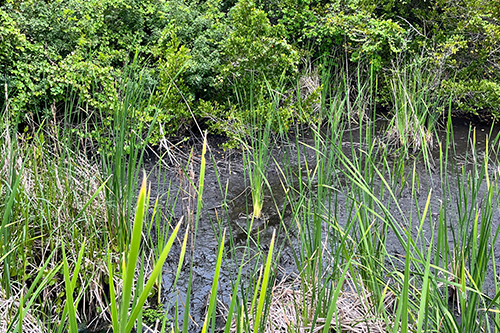
Water finger marks the beginning of the Indian River Lagoon
Reducing Nutrient Pollution
The goal of this stormwater treatment facility is to improve stormwater runoff and groundwater baseflow – key contributors to high nutrient loading in the area. This project is expected to contribute to a load reduction per year of nearly 34 pounds of nitrogen and 8 pounds of phosphorus measured downstream of the stormwater treatment facility.
The County has identified the Happel Property, a site located along U.S. Highway 1 between Pisces Lane and Ruby Street in Rockledge, Fla., as an ideal spot for a new stormwater treatment facility.
The facility we are designing involves three components to improve nutrient removal from stormwater and groundwater flowing through the area: a wet detention pond, gabion wall (a retaining wall made of wire or mesh), and a denitrification wall (an underground barrier designed to reduce nitrate levels in groundwater).
Wet Detention Pond
Our design reconnects existing pipes to divert runoff into the wet detention pond while ensuring minimum flow discharges are maintained to protect adjacent wetlands. The proposed piping system directs runoff to the facility, where the wet detention pond serves as the first in a series of best management practices (BMPs). Its permanent pool volume is designed to support nutrient removal.
Gabion Wall
It serves to prolong the path of water in the detention pond. The runoff is being released at a controlled rate out of the facility, allowing a longer detention time for treatment. Percolation through the pond berm soaks the media in the denitrification wall, achieving a more significant reduction of nutrients.
Denitrification Wall
The denitrification wall will be positioned along the northeastern side of the Happel Property near the vegetation line and the tributary leading into the Lagoon.
The denitrification wall will be constructed with a mix of on-site soil, sawdust, and non-calcareous gravel, all encased in filter fabric. Brevard County has conducted several studies about material/ratio combinations yielding greater nutrient removal. So far, they have settled on the proposed combination as it is proven and cost-effective.
At 4 feet thick and 5 feet tall, the wall is engineered to sit several feet below typical groundwater levels to ensure its lower portion stays submerged. This constant contact with groundwater helps extend the wall’s lifespan and boosts its ability to filter out pollutants before they reach the Lagoon. The denitrification wall is the polishing component of the facility, which works as a best management practice (BMP) in series with the pond.
Happel Property
The Happel property acts as a collection point for runoff from surrounding areas. Sitting at a lower elevation, it receives water that flows from higher ground by grassed swales and a cross-drain under U.S. Highway 1.
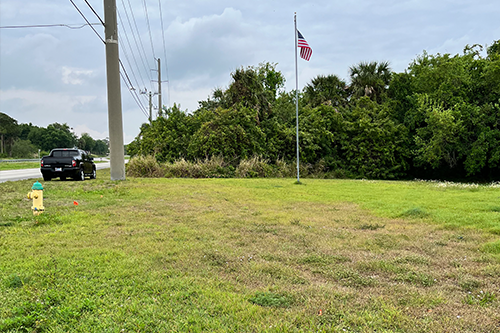
Happel property facing North and East of U.S. Highway 1
Immediate polishing of runoff will positively impact the ecosystem and habitats of species in the surrounding wetlands and Lagoon. Overall removal efficiency is approximately 36 precent nitrogen and 60 percent phosphorous. Walls serve as good stormwater polishers when in a series with another BMP.
On the highway’s southbound side, swales channel runoff from the road, driveways, and nearby developments into a cross-drain, which then directs the water to a wetland at the northern end of the Happel property. This wetland ultimately connects to the Indian River Lagoon. The southern portion of the property also collects runoff from open areas near Ruby Street. Together, these systems manage the flow of water through the site.
Overcoming Challenges
This project faced a key challenge due to the large contributing basins upstream of the proposed stormwater treatment facility, which reduced nutrient removal rates in the absence of nearby treatment facilities.
Our fieldwork revealed a steady inflow of groundwater originating near the train tracks on the east side of U.S. 1. These groundwater flows enter a Florida Department of Transportation (FDOT) culvert and discharge directly into the Lagoon without any treatment or monitoring. This project addresses the issue by introducing a checkpoint upstream, allowing all inflows to be managed and treated before mixing with the Lagoon.
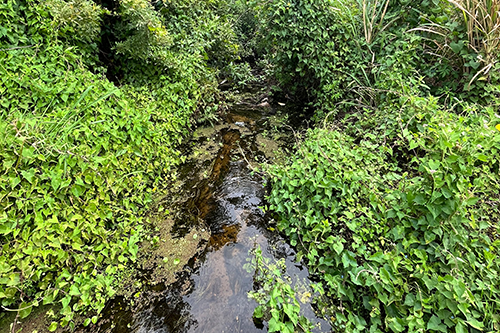
Natural ditch downstream of cross-drain flowing into the wetlands
To support the design and permitting process, we used StormWise software, which models the hydrologic and hydraulic conditions of the area. This tool allows us to conduct an analysis of discharges and peak stages under pre- and post-development scenarios, ensuring the design is adequate in providing flood protection for less frequent storm events.
Since U.S. Highway 1 is managed by the Florida Department of Transportation (FDOT), we are working closely with the agency to secure construction permits. We are also coordinating with the St. Johns River Water Management District (SJRWMD) to ensure compliance with regulatory requirements.
Implementing Ruby Street stormwater improvements presents data collection opportunities to streamline the County’s efforts to improve water quality in the Lagoon and surrounding communities. These efforts establish a more sustainable approach to stormwater management, protecting the Lagoon while supporting regional water quality goals.
Learn more about our Water Resources/Stormwater Managment services here.


